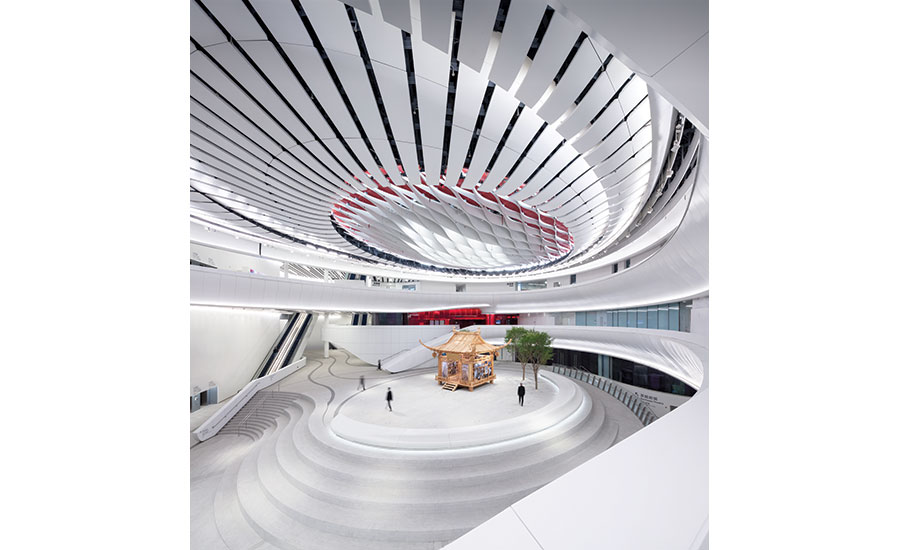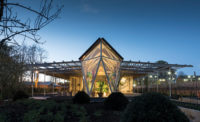In 1998, Hong Kong’s chief executive Tung Chee-hwa had a bold vision for 100 acres of reclaimed land in West Kowloon—to turn it into a cultural district with performing-arts venues, an arts center, and an exhibition space. The initiative has slowly come to life, most recently with the construction of the 320,000-square-foot Xiqu Centre opera house, designed by Canadian firm Revery Architecture (formerly Bing Thom Architects) and Hong Kong–based practice Ronald Lu & Partners. Drawing inspiration from qi—which, in Chinese, translates to “flow”—the architects devised the building’s curvilinear aluminum exterior and carried the conceit inside. Below the elevated 1,000-seat Grand Theatre, the team carved out a swoopy atrium. At its center, a pedestal-like performance area rises 11-feet from the sloping floor and is topped with a cloud-like ceiling fashioned of white-painted aluminum ribbons; the space currently displays an installation inspired by traditional theater pavilions. Here, visitors can enjoy xiqu—Chinese opera—demonstrations even if they don’t have tickets to catch a full performance. “There is this ‘flow’ in the way people dance and in the way the music is played in Chinese opera,” says Revery’s design principal Venelin Kokalov. “We wanted to create an atmosphere that brings out this feeling.”
Xiqu Centre by Revery Architecture and Ronald Lu & Partners
Hong Kong

Photo © Ema Peter, courtesy Revery Architecture





Post a comment to this article
Report Abusive Comment